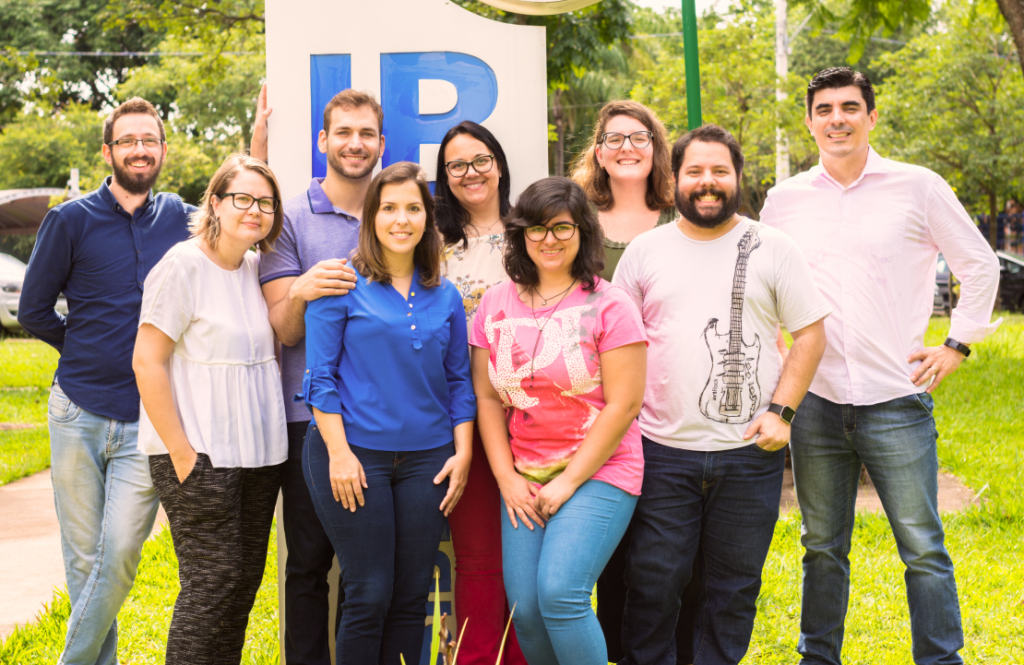This article was originally published Pharmacology Matters July 2018.


The idea of a magic bullet is very compelling and attractive. Curing diseases with the precise delivery of therapeutics to the target cell or microorganism has received the attention of many laboratories around the world and has captured the imagination of [1] writers and film directors for many years.
The possibility of engineering nanotherapeutics capable of effectively achieving these goals is the daydream of researchers everywhere. Nanomaterials are not only used in medicine; their use expands to electronics, agriculture, textile production, and many other industries [2,3].
Many nanomedicine products have reached the shelves, being used to either treat or diagnose diseases [4]. But one limitation of their use in medicine is their toxicity. For this reason, many efforts are under way to understand the [5] mechanisms of nanotoxicity.
My laboratory is multidisciplinary and highly collaborative, and we focus on how nanoparticles interact with cells. One of the areas of interest in my lab includes investigating the mechanisms through which nanomaterials interact with cells in the body. This puzzle requires the knowledge of the nanoparticle’s properties and how the biological media interact with the nanomaterial. Obviously, cells play an important role in taking up the particles and processing them. For these reasons, we are firstly interested in how nanomaterials interact with cells [6,7], how they are taken up by cells, and what they do with nanomaterials such as carrying oligonucleotides [8]. Secondly, we are interested in investigating the risks involved in the use of nanoparticles and the events they may trigger in different cells of the body. One of the risks they present relates to their small size and the way through which they can travel in the body and reach cells in many vital organs, potentially inducing toxicity.
Through the study of silver nanoparticles, we have found that they induce oxidative stress in hepatocytes [9]. Previous studies have also found that cell death is induced by silver nanoparticles [10] and therefore we wanted to investigate the connection between oxidative stress and cell death. In our studies we found that whilst the presence of some antioxidants mitigated silver nanoparticle-induced oxidative stress, other antioxidants didn’t. Then things started to become more interesting. Digging deeper, we found that some antioxidants can bind with silver nanoparticles. This was somewhat unexpected and a potential game changer. This finding led us to wonder, if specific antioxidants can bind directly to the nanoparticles in vitro, how does this translate in vivo? Could the binding of antioxidants to silver nanoparticles prevent toxicity? We know that silver nanoparticles lead to hepatotoxicity so, we treated rats with silver nanoparticles, one hour later we injected the antioxidant and after 24 hours we checked for the toxic effects. The result was astonishing: all signs of toxicity related to nanoparticle liver accumulation were gone [11]. After antioxidant treatment, they were excreted in the urine. The good news was that this antioxidant is approved for human use and has been for decades.
Our work continues but is just one example of how we were able to transform an artifact into an antidote.
Then things started interesting. Digging deeper, we found that some antioxidants can bind with silver nanoparticles.
- Strebhardt K, Ullrich A. Paul Ehrlich’s magic bullet concept: 100 years of progress. Nat Rev Cancer. 2008 May 12;8(6):473–80.
- Yetisen AK, Qu H, Manbachi A, Butt H, Dokmeci MR, Hinestroza JP, et al. Nanotechnology in Textiles. ACS Nano. 2016 Feb 17;10(3):3042–68.
- de Oliveira JL, Campos EVR, Bakshi M, Abhilash PC, Fraceto LF. Application of nanotechnology for the encapsulation of botanical insecticides for sustainable agriculture: Prospects and promises. Biotechnol Adv. Elsevier; 2014 Dec 1;32(8):1550–61.
- Anselmo AC, Mitragotri S. Nanoparticles in the clinic. Bioeng Transl Med. Wiley-Blackwell; 2016 Mar;1(1):10–29.
- Maynard AD, Aitken RJ. “Safe handling of nanotechnology” ten years on. Nat Nanotechnol. 2016 Dec 6;11(12):998–1000.
- de Jesus MB, Kapila YL. Cellular Mechanisms in Nanomaterial Internalization, Intracellular Trafficking, and Toxicity. In: Durán N, Guterres SS, Alves OL, editors. Nanotoxicology. New York, NY: Springer New York; 2014. pp. 201–27. (Nanomedicine and Nanotoxicology).
- Sahay G, Alakhova DY, Kabanov AV. Endocytosis of nanomedicines. J Control Release. 2010 Aug 3;145(3):182–95.
- de Jesus MB, Zuhorn IS. Solid lipid nanoparticles as nucleic acid delivery system: Properties and molecular mechanisms. J Control Release. 2015 Mar 10;201C:1–13.
- Ferreira LAB, dos Reis SB, do Nascimento da Silva E, Cadore S, da Silva Bernardes J, Durán N, de Jesus MB. (2019) Thiol-antioxidants interfere with assessing silver nanoparticle cytotoxicity. Nanomedicine: Nanotechnology, Biology and Medicine. 24 102130.
- Kim S, Ryu D-Y. Silver nanoparticle- induced oxidative stress, genotoxicity and apoptosis in cultured cells and animal tissues. J Appl Toxicol. Wiley-Blackwell; 2013 Feb;33(2):78–89.
- Mendonça MCP, Ferreira LB, Rizoli C, Batista ÂG, Maróstica Júnior MR, da Silva EDN, Cadore S, Durán N, Cruz- Höfling MA, de Jesus MB. (2019) N-Acetylcysteine reverses silver nanoparticle intoxication in rats. Nanotoxicology. 13 (3), 326–338.